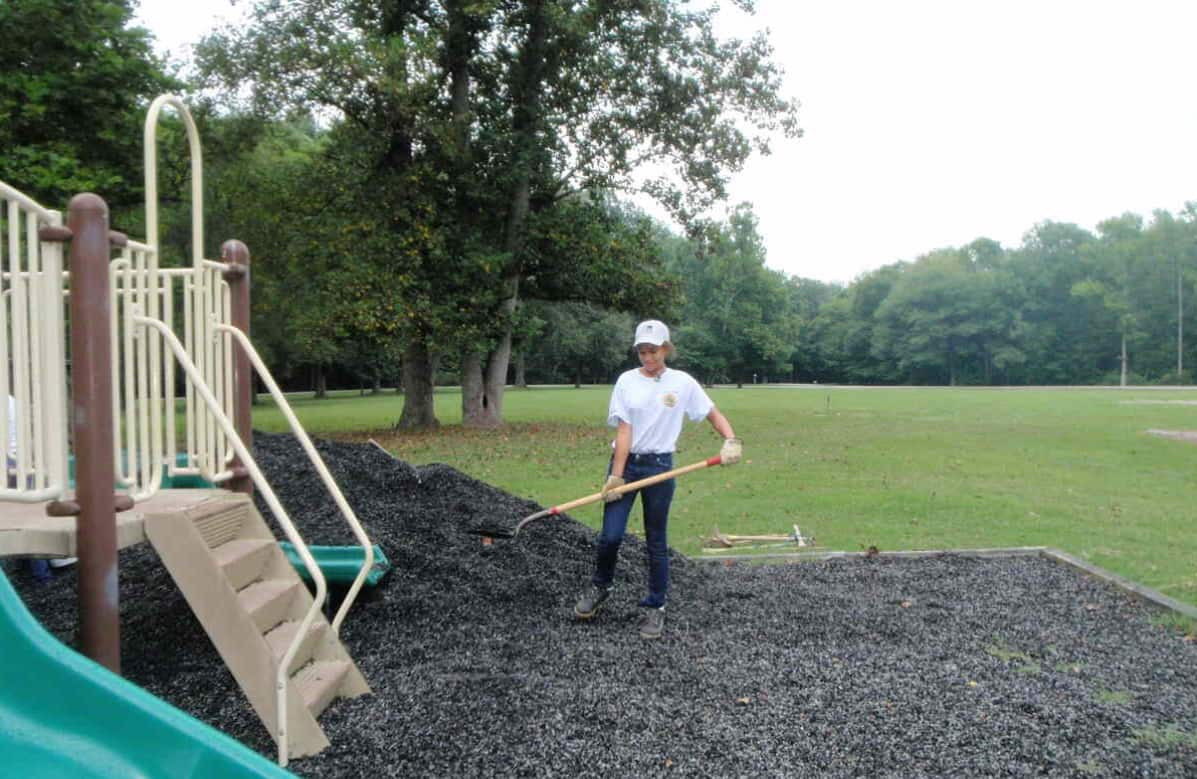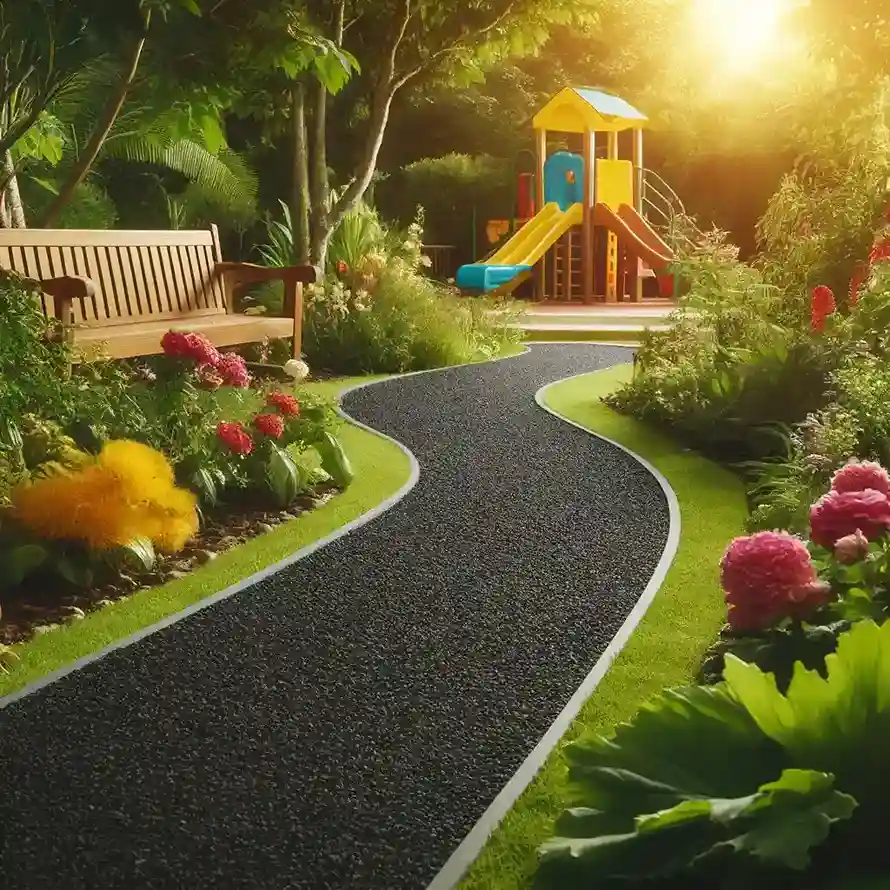When it comes to landscaping or creating a safe space for kids to play, finding the right mulch can feel overwhelming. Among the many options, rubber mulch often stands out. It’s marketed as eco-friendly, long-lasting, and low-maintenance—basically one of the most versatile options among mulches.
But like anything else, it has its drawbacks too. So, is rubber mulch really the answer to your landscaping needs, or should you think twice before committing? Let’s break it all down.

What Is Rubber Mulch and Why Is It So Popular?
A Brief Overview
Rubber mulch is exactly what it sounds like—shredded pieces of recycled tires, repurposed into a ground cover. You’ve probably seen it on playgrounds or in sports fields, but it’s also becoming popular in home gardens and landscaping projects.
It promises durability, vibrant colors, and better safety for kids playing on it.
Why People Love It
One big reason rubber mulch is so popular is its eco-friendly pitch. Recycling old tires (290 million of them every year!) into something useful sounds like a win for the environment.
On top of that, it’s extremely low-maintenance, which appeals to anyone tired of constantly reapplying wood chips or fighting off weeds.
The Shiny Side: Pros of Rubber Mulch
Let’s start with the good stuff. Rubber mulch has a lot going for it, and it’s easy to see why people are drawn to it.
Long-Lasting and Practical
Rubber mulch is highly durable. Unlike wood mulch, which breaks down and needs replacing every year or two, rubber mulch can last up to 20 years. It doesn’t decompose, which means less work for you. Plus, it comes in different colors, giving your garden or play area a neat, polished look.
Pest-Free and Weed-Resistant
If you’ve ever battled weeds or worried about termites taking over your yard, rubber mulch might be a practical solution to common yard problems. Its dense structure blocks weed growth and doesn’t attract pests like carpenter ants or termites.
Wind- and Water-Resistant
Rubber mulch is resistant to displacement by wind or storms, and it doesn’t absorb water, so it dries quickly. This makes it ideal for places with heavy rain or strong winds.
Safe for Kids
For playgrounds, rubber mulch is a favorite because of its ability to cushion falls. It’s softer than wood chips, which can cause scrapes or splinters, making it a safer choice for children.
Eco-Friendly Benefits
Here’s a big one: rubber mulch helps keep millions of old tires out of landfills. Repurposing those tires reduces waste and supports recycling efforts, which is an additional environmental benefit for anyone going green.

The Dark Side: Cons of Rubber Mulch
But every shiny coin has a flip side. While rubber mulch has its perks, it’s not without its flaws.
Toxicity and Environmental Concerns
Rubber mulch isn’t entirely innocent when it comes to safety. Studies show it can release harmful chemicals like zinc and lead into the soil over time. This is a particular concern for gardens where you grow food or where kids spend a lot of time.
Flammability Hazards
Here’s a scary thought: rubber mulch is highly flammable. Once it catches fire, it burns at very high temperatures and can release toxic fumes. This makes it risky for areas near barbecues, fire pits, or even cigarettes.
No Nutritional Value
Unlike wood mulch, rubber mulch doesn’t decompose and add nutrients to the soil. If you’re trying to create rich, healthy soil for your plants, rubber mulch won’t do you any favors.
Questionable Safety for Kids and Athletes
While it cushions falls, rubber mulch raises concerns for children and athletes exposed to it for long periods. Some worry about the chemicals in tire rubber, which could pose long-term health risks.
Less Durable than Initially Marketed
Rubber mulch is durable, but it’s not indestructible. Over time, microbes in the soil can break it down, and UV rays can cause it to fade and degrade.
| Pros | Cons |
|---|---|
|
|
Weighing the Options: Is Rubber Mulch Worth It?
When Rubber Mulch Works Best
Rubber mulch excels in specific scenarios. If you’re looking for a low-maintenance option that won’t blow away in the wind, it’s a great choice. It’s also ideal for high-traffic areas like playgrounds, pathways, or spots prone to pests.
When to Think Twice
If you’re landscaping a garden with nutrient-hungry plants or if you’re worried about soil contamination, rubber mulch might not be the best fit. The flammability risk is another factor to consider, especially if you love outdoor grilling or live in a wildfire-prone area.
Where to Find Rubber Mulch and What to Look For
If you’re ready to give rubber mulch a try, make sure to do your research. Look for trusted brands that offer clean, wire-free products to avoid safety hazards.
If accessibility is a concern, check for ADA-compliant options, which are great for playgrounds and public areas. And don’t forget to compare costs—it’s pricier upfront than wood mulch but may save money in the long run.
Conclusion: The Final Verdict on Rubber Mulch
Rubber mulch has some impressive benefits. It’s long-lasting, low-maintenance, and keeps tires out of landfills. For playgrounds or areas where you want a clean, polished look without constant upkeep, it’s a solid choice.
But it’s not perfect. Concerns about toxicity, flammability, and lack of nutritional value for plants can’t be ignored. If safety and soil health are top priorities, you might want to consider other options.
Key Takeaways:
- Choose rubber mulch for durability, pest resistance, and playground safety.
- Avoid it for gardens or areas near fire risks.
- Weigh the pros and cons carefully based on your needs.
Ultimately, the decision comes down to your priorities. If low-maintenance and long-lasting appeal are what you’re after, rubber mulch could be the perfect solution for you. Just make sure you’re aware of its limitations before you buy.





